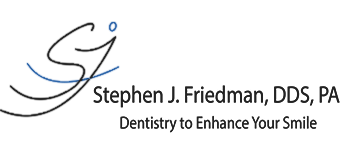Crowns
If you develop a cavity or you crack or chip a tooth, it’s important to meet with a dentist as soon as possible. An oral prosthetic, such as a crown, can preserve the strength and appearance of your tooth, preventing the need for an extraction or other, more invasive treatments. At his practice in Silver Spring, Maryland, Stephen J. Friedman, DDS, PA, regularly uses dental crowns to restore his patients’ smiles. To request your appointment with Dr. Friedman, call the office or click the online booking tool today.
What are dental crowns?
A dental crown is a tooth-shaped and tooth-colored covering that replaces the damaged structure of the tooth.
In the past, crowns had to be produced in a lengthy process of prepping the tooth to be restored, taking an impression and making a temporary crown, and then sending the model and/or impression to the dental laboratory off-site for fabrication. The patient then had to return for another appointment to have the crown delivered.
The newer in-office technology of “bonded crowns” makes the crown fabrication much simpler, eliminating the need for an off-site dental lab and allowing for more conservative treatment of tooth structure.
With the new technology, the dentist no longer has to remove the entire circumference of the tooth to be crowned. The reason is two-fold.
First, the newer Ceramo-Resin Crown technology allows for providing high strength in small ceramic replacement parts for teeth allowing prepping to be minimal and still provide strength and resistance to chewing forces. And second, because the retention of the restored part of a “bonded crown” can be achieved using very strong adhesive resin cements now available.
Further, the newer in-office technology eliminates having to send an impression to an off-site lab for crown fabrication. Now, the impression of the prepared tooth can be taken with a camera digitally and transferred to a computer where the missing tooth part can be previewed and restored virtually to fit the tooth and bite before fabricating it in the office.
Dr. Friedman is proud to offer the more conservative CEREC® same-day bonded crowns. The CEREC system mills dental crowns on-site, and in most cases, saves the patient the inconvenience of having to return to the office for multiple appointments.
What types of issues can dental crowns correct?
Dental crowns are very versatile. A crown can provide:
- Protection for a weak or damaged tooth
- Retention to hold a dental bridge in place
- Restoration of a dental implant
- Restoration of a broken or worn-down tooth
- A cosmetic modification of the shape or color of an existing tooth.
How many appointments does it take to receive a dental crown?
With the newer technology, receiving a dental crown usually requires only one appointment. After the patient’s initial exam and the need for a crown is detected, , Dr. Friedman can usually determine if a single appointment crown is indicated. If there are circumstances requiring lab fabricated materials for extra – strength or lab techniques for the design, Dr. F will make impressions and send models to the dental laboratory for a multiple appointment crown fabrication. In these cases, a resin temporary crown or bridge is cemented into place to provide function and esthetics while the permanent restoration is fabricated.


